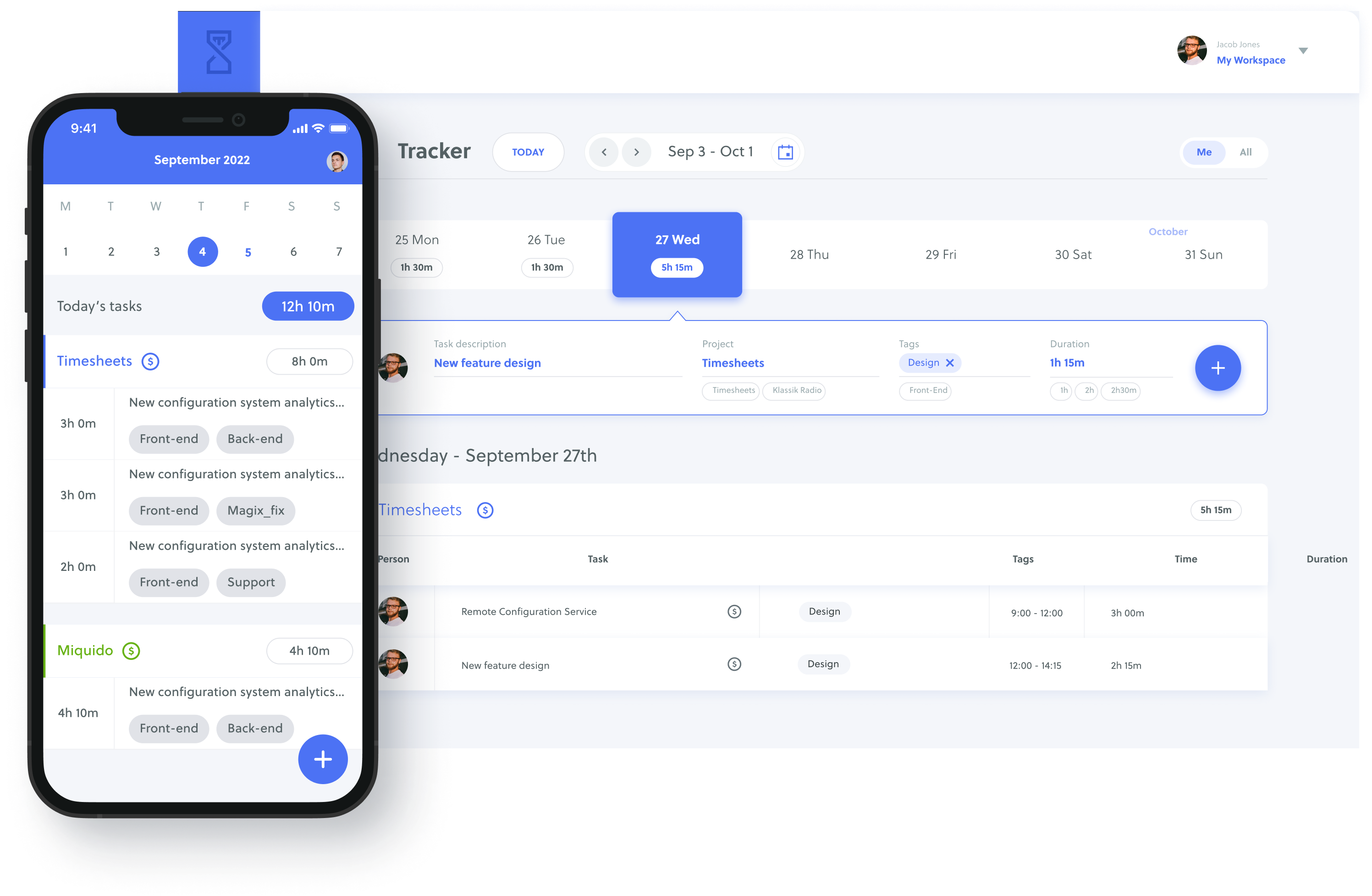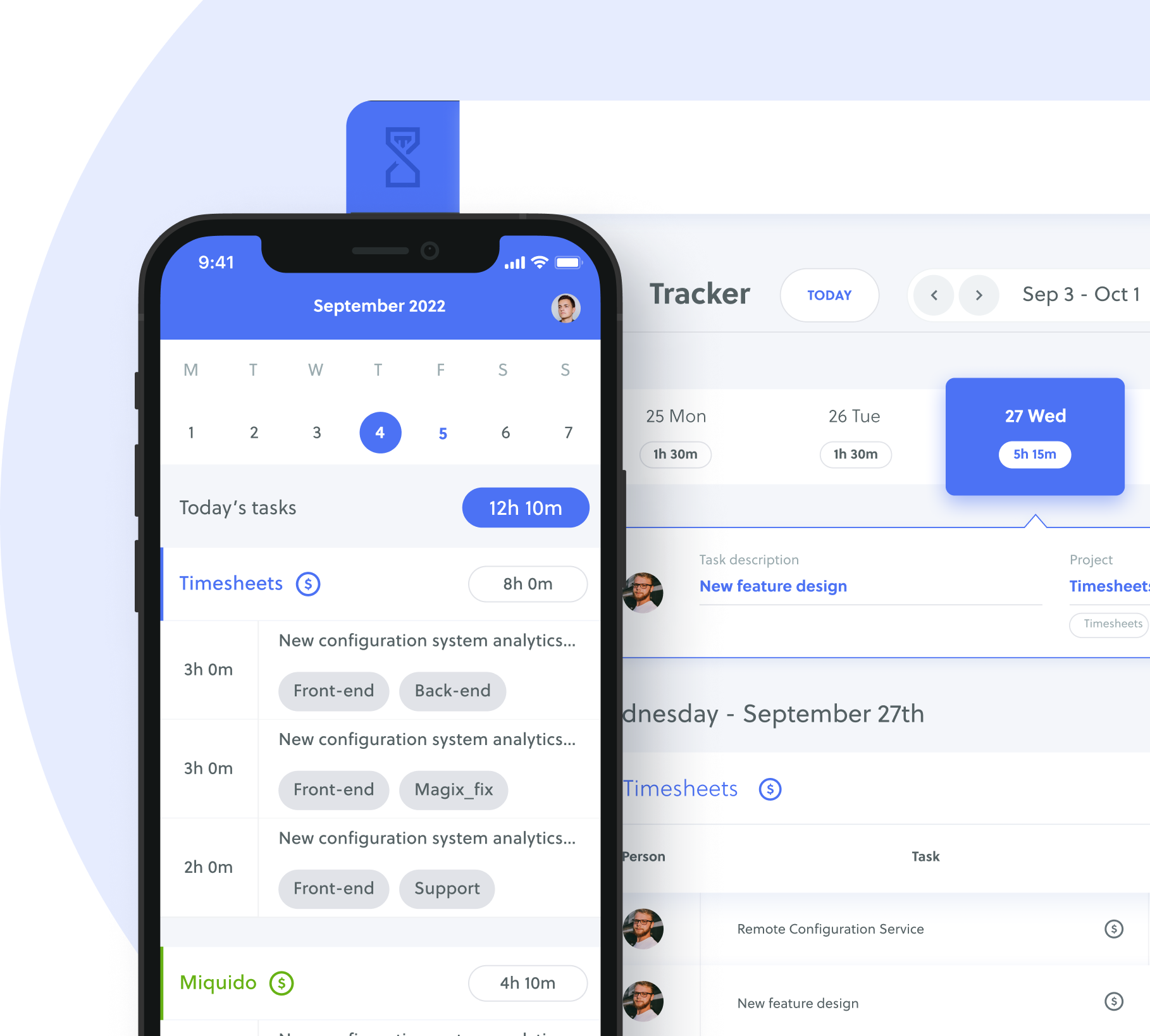Effective time management is one of the most important things businesses need to master. Properly managing your individual and teams’ time is often the key to successful workstreams, productivity and can even help you save money. Saying you’re going to be productive is one thing, but it’s much harder in practice. Enter: the pomodoro technique.
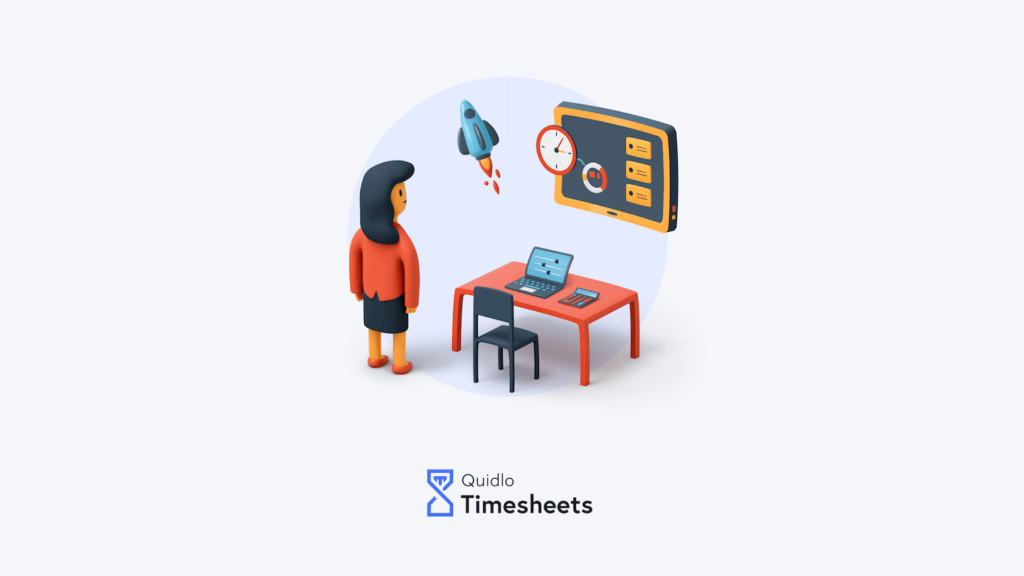
The pomodoro technique is one of the most popular time techniques in the world. It’s used everywhere from schools to the workplace and has proven to help thousands of people banish distractions, fully focus on tasks and optimise their productivity levels.
If you find you’re easily distracted and work well when time-management is made simple and fun, the famous pomodoro technique may be for you. Whether you’re familiar or not with the pomodoro technique, read on to find out more about how to make it work for you, plus some of the best tools you can use.
Table of Contents
What is the pomodoro technique?
The pomodoro technique is a time-management method, developed back in the 80s by Italian university student Francesco Cirillo (pomodoro is Italian for tomato). He was struggling with a lack of productivity and procrastination and couldn’t complete his assignments. He aimed to solve his problem by challenging himself to just 10 minutes of focused study time, timing himself with a – you guessed it – tomato shaped kitchen timer. Finding this method extremely effective, Cirillo created the full pomodoro technique with 6 key steps:
✅ Choose a single task to work on
This can be anything, big or small. The golden rule is to only choose one task at a time and give it your undivided attention while you work on it.
🍅 Set the pomodoro timer (usually for 25 minutes)
Set yourself up to work, completely uninterrupted for 25 minutes – no more and no less. Promise yourself to focus only on this task during this time.
⏲️ Work on your task until the timer goes off – record this as 1 pomodoro complete.
Set to work on your chosen task. If your mind wanders or a distraction pops up, simply note it down and get back to the task at hand. Once the timer rings, check off ‘1 pomodoro.’
⏸️ Take a short break (usually 5 minutes)
Take a few minutes to relax, grab a coffee or do anything else not work related. This is a de-stress time!
🔁 Repeat until you have completed 4 pomodoros (4, 25 minute sessions)
Keep going with the 25 minutes of work, 5 minute break pattern until you get to 4 pomodoros.
⏸️ Take a longer break (usually 20-30 minutes)
Once you’ve completed 4 pomodoros you can treat yourself to a longer break. Again, do something that you enjoy that isn’t related to work. The idea is to give your brain a rest before the next set of pomodoros.
Keep repeating until your task is complete.
How to use the pomodoro technique
One of the reasons the pomodoro technique is so successful is that it’s simple and easy to remember. However there are a few rules to keep in mind to set you up for success.
The pomodoro timer is law!
Once you set your timers, stick to them. A pomodoro is a unit of time that is designed not to be broken. That means avoiding spending the time on anything else that is not part of the task – so no checking emails, replying to texts or scrolling the internet. Make sure you don’t finish work before or after the timer goes off. If you finish before, you open yourself up to more distractions and procrastination. If you finish after, you’re not giving your brain proper rest which can negatively impact your productivity.
Manage tasks by complexity
If your task requires a lot of pomodoros, it should be split into smaller steps. This will help you to make your project much more manageable, and will encourage you to make progress by tracking milestones.
On the other hand, combine any easy tasks that won’t need more than 1 pomodoro to complete.
When interrupted, start again
For interruptions that can be addressed later, write them down. For urgent ones that need immediate attention, simply take your 5 minute break and start again. If you find yourself getting distracted often, start tracking them and reflect on how you can avoid them in your next pomodoro session.
The benefits of the pomodoro technique
The pomodoro technique is popular for a reason! Here are all the main benefits of the technique.
Track exactly where your time goes
The key to starting proper time management is to audit how you currently spend your hours. Time tracking helps you understand exactly how long you’re spending on each of your tasks. Once you’ve completed a few pomodoros and tasks, you’ll get a better understanding of how long certain projects take, which can help you plan out your time in the future. It can also help you identify any issues such as spending too little or too much time on certain projects.
Create an effective timetable
Once you’ve tracked your time enough, you’ll be able to design a timetable that’s perfectly designed to work with you, not against you. With the information from your pomodoro tracking, you can accurately predict how long a task will take, and block out exactly that amount of time in your calendar. This means that you’ll be motivated to work without being over ambitious about what you can achieve.
The pomodoro technique also helps you to stay productive by dedicating periods of time to deep focus and relaxation. You’ll be able to clearly distinguish your work from your free time. This will help you avoid distractions while you’re working (you can answer those texts in your 5 minute break) and avoid burnout.
Define and achieve your own objectives
The pomodoro technique works so well because it can be tailored to you. Everyone’s goals are different, and the pomodoro technique can work for pretty much all of them. You can adapt it to fit your current needs as you want.
Improve your motivation
Gamifying time tracking is a great way to keep you motivated, and the pomodoro technique does just that. The timelines and the timer ringing create a sense of urgency, which means you’ll feel more motivated to get the task done. What’s more, once you complete a pomodoro, you’re rewarded with a non-work related break. The reward creates a positive association with completing a pomodoro, so you’re more likely to keep going and stay motivated.
Get into deep work
Deep work is when you’re totally engaged, immersed, and focused on your selected project or area of study. This is when you’re most likely to complete your best work in a timely manner. However, deep work can be instantly broken the minute our minds get distracted. Constant distractions can pull you right out of the deep work state and make it challenging to return to it.
The pomodoro technique makes a big point of the importance of removing all distractions from your work space. Silence your phone, block notifications on your computer, let others know you can’t be interrupted – do whatever you need to make your work environment a focused one. Without distractions, you’ll be able to get into deep work more easily, which means your work will benefit in both quality and speed.
Create a better relationship with time
The pomodoro technique helps you create a better relationship with time. Instead of stressing over looming deadlines and tasks that feel like mammoth feats, the pomodoro breaks up time into manageable chunks. Working for just 25 minutes feels achievable, not scary! The regular breaks help reduce stress too, and give you a little time to recompose yourself, take a breather and reset before getting back to work.
Avoid and manage distractions
As mentioned, the pomodoro technique places a big emphasis on avoiding distractions. As well as this, the technique allows you to better manage them in the future. You’ll be able to spot potential distractions and avoid them, or analyse what times distractions pop up. You may even realise that you’re getting distracted far too much, which will allow you to take actions to solve this.
The best pomodoro trackers
- Quidlo Timesheets
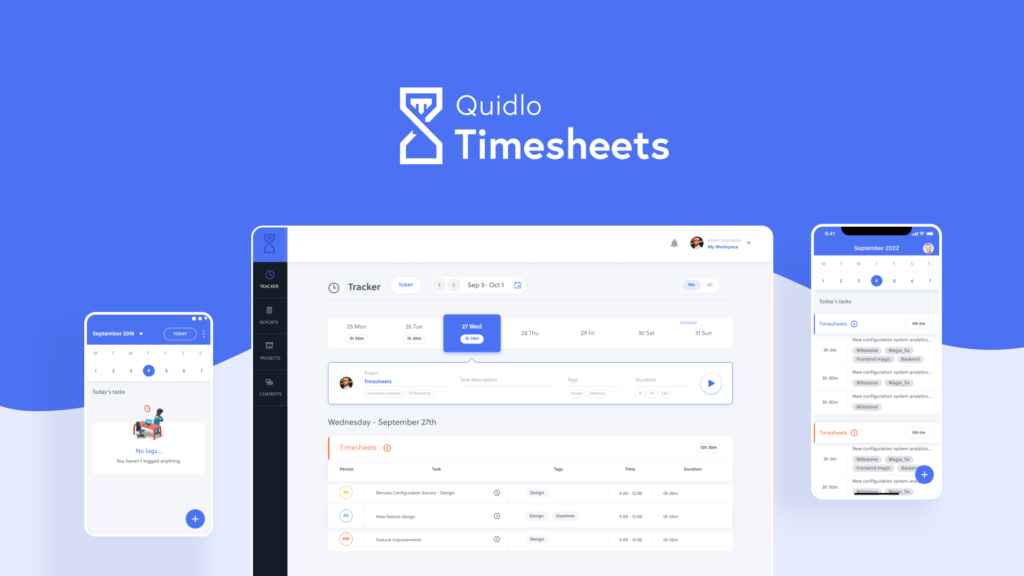
Quidlo Timesheets is an intuitive time tracker for teams of all sizes. The app works on web, desktop or mobile and integrates with tools such as Google, Jira or Slack. Quidlo Timesheets is perfect for using the pomodoro technique as it has a timer built in, plus the ability to manually add your time in later. It’s an easy and lightweight tool to use, much like Pomofocus, yet it comes with a lot more features for those looking to get more in-depth with their time tracking. Quidlo Timesheets is suited to teams looking to create and share custom reports of their time. It allows you to easily manage tasks into projects, which is perfect for breaking down your work into manageable sections like the pomodoro technique requires.
- Pomofocus
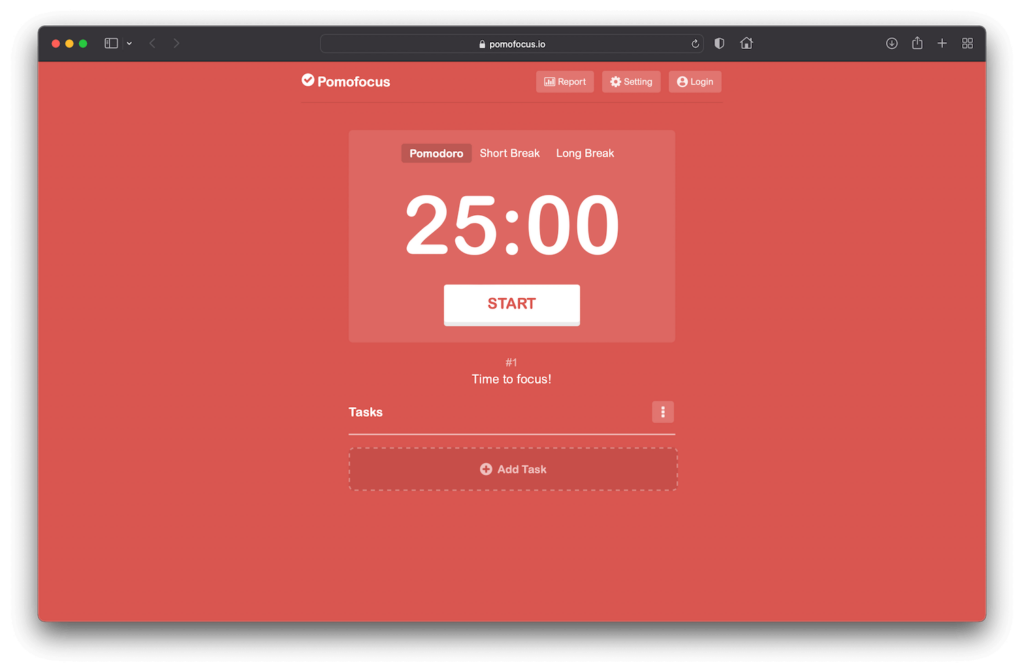
Pomofocus is a simple pomodoro timer for both desktop and mobile browsers. The app is free to use and was built specifically with the pomodoro technique in mind. Because of this, its features are designed around the traditional pomodoro timeframes which makes it easy to use. The main feature is, of course, the timer, which allows you to time your short or long breaks in the click of a button. While the tool is very simple, it does have a feature to allow browser notifications and even to see a basic report of how you’ve spent over the past days and weeks.
- Forest
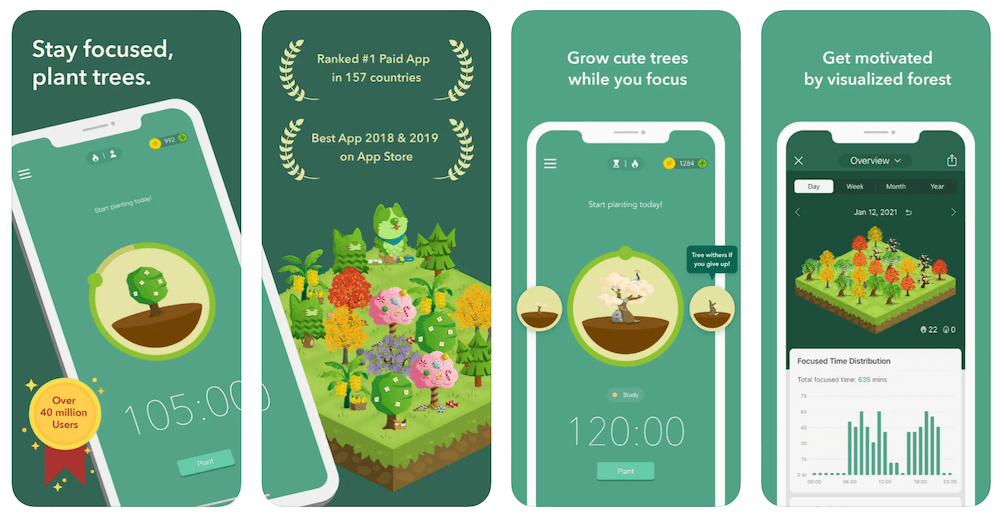
Forest is a mobile app that is designed to help you stay focused when you’re at work. The pomodoro technique is only effective if you avoid all distractions. Forest helps you do just that. Every time you want to stay focused on a task, you ‘plant a tree’ in the app. While you are focused, the tree grows. If you leave the app to scroll the internet, the tree will die. As you log in and plant trees, you’ll eventually grow a forest. This app is an interesting, fun and visual way to avoid getting distracted, and for that reason, is a great tool to support the pomodoro technique.
- Clockwise
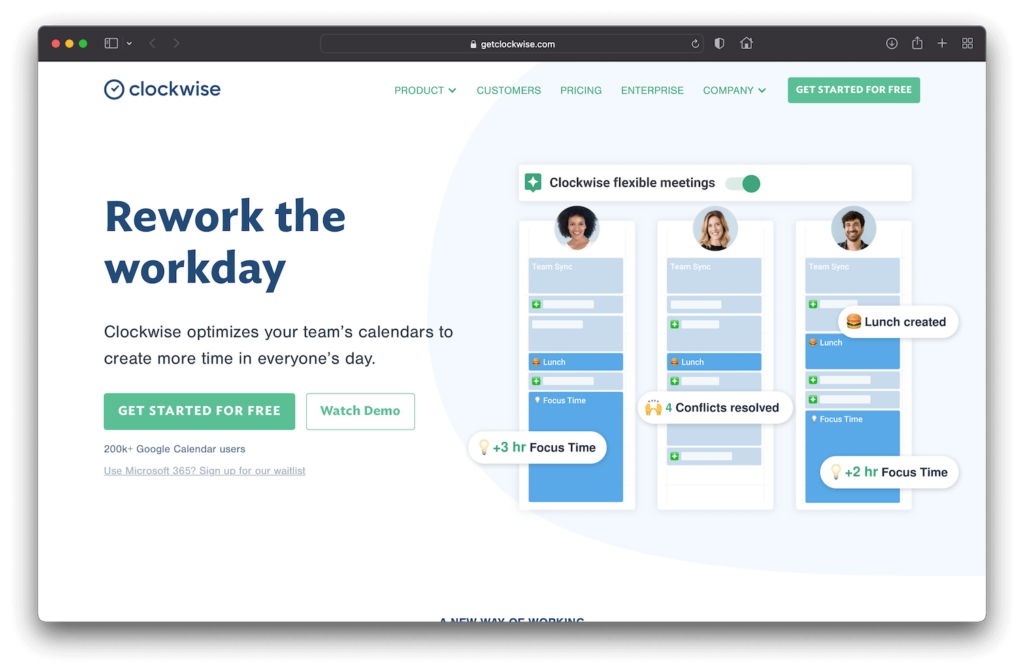
Clockwise is a nifty time management tool that looks to optimise you and your team’s time. With Clockwise, each user chooses their work schedule preferences – whether they like to work in the morning or evening, how long they want to take for lunch and so on. Clockwise then creates personalised schedules based on these preferences, designing the ideal work day for everyone. Using AI, the app can automatically create blocks of focus time and rearrange your schedule to fit them in. This way you can make time for uninterrupted work time and effectively use the pomodoro technique.
A timeless technique for anyone
The pomodoro technique at its core is a simple time management method that can work for pretty much anyone with any objective. One of the main things to keep in mind when using the pomodoro technique is that you need to break up work with regular, short breaks to help keep your mind working to the best of its ability. The other important thing to remember is that you must avoid distractions as much as you can and stay focused on the one task you set out to do.






